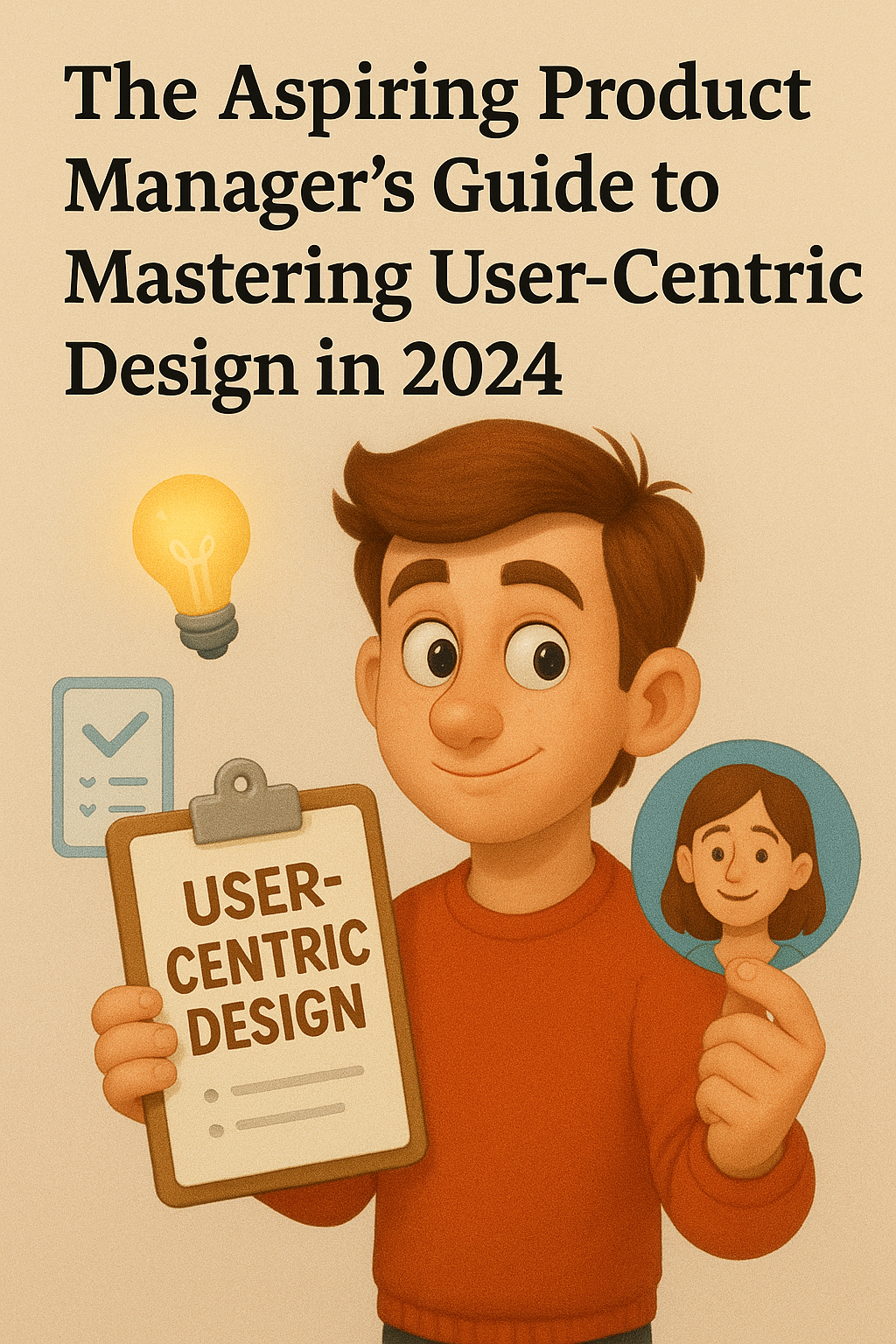The Aspiring Product Manager's Guide to Mastering User-Centric Design in 2024
Jun 12, 2025

The Aspiring Product Manager’s Guide to Mastering User-Centric Design in 2024
Introduction
In the rapidly evolving tech landscape of 2024, mastering user-centric design is more crucial than ever for aspiring product managers. This guide provides a comprehensive approach to understanding and implementing user-centric design principles to create products that truly resonate with users.
Understanding User-Centric Design
User-centric design (UCD) is a framework that places the user at the heart of the design and development process. This approach aims to tailor products to meet the specific needs and wants of users, enhancing user satisfaction and engagement.
-
Empathy: Begin with a deep understanding of your users’ needs, experiences, and pain points.
-
Research: Conduct user research through surveys, interviews, and usability testing.
-
Personas: Develop user personas to represent your typical users and keep their preferences in focus.
Actionable Insight: Always validate your assumptions about users through direct interaction and research, avoiding biases that can lead product development astray.
The Process of Integrating User-Centric Design
To integrate UCD effectively, follow a structured process that promotes continuous learning and adaptation based on user feedback.
1. Identify User Needs: Start by identifying and understanding the problems or needs that users are facing.
2. Prototype Solutions: Develop low-fidelity prototypes to explore potential solutions.
3. Test and Gather Feedback: Use iterative testing to refine prototypes based on real user feedback.
4. Implement Improvements: Apply the insights from testing to develop high-fidelity designs that are ready for production.
5. Launch and Evaluate: After launching the product, continuously gather and analyze user feedback for further refinement.
Actionable Insight: Leverage tools like A/B testing and analytics platforms to measure user engagement and satisfaction post-launch, ensuring that the product evolves with user needs.
Tools and Technologies for User-Centric Design
Several tools and technologies can aid product managers in implementing a user-centric design approach:
-
User Research Tools: Platforms like UserTesting, Lookback, or Hotjar for capturing user behavior and feedback.
-
Design and Prototyping Tools: Use Figma, Sketch, or Adobe XD for creating and testing design prototypes.
-
Project Management Tools: Tools like Jira, Asana, or Trello to keep track of design and development tasks.
Actionable Insight: Choose tools that integrate well with each other to ensure a seamless flow of information across the user-centric design process.
Challenges and Solutions in User-Centric Design
While user-centric design is beneficial, it comes with its set of challenges:
-
Resistance to Change: Stakeholders may be resistant to a user-centric approach if they are accustomed to technology or business-driven strategies.
-
Resource Intensiveness: UCD can be resource-heavy in terms of time and manpower, particularly in the research and testing phases.
Actionable Insight: Advocate for the long-term benefits of UCD, such as increased user satisfaction and loyalty, which often lead to higher ROI. Also, optimize the use of resources by prioritizing key features based on user feedback.
Conclusion
As a product manager, embracing user-centric design in 2024 means committing to an ongoing process of learning and adaptation. By focusing on the needs and feedback of users, you ensure that your product not only meets but exceeds user expectations, thereby driving success in an increasingly competitive market. Remember, in user-centric design, the user’s voice is the most critical metric for success.